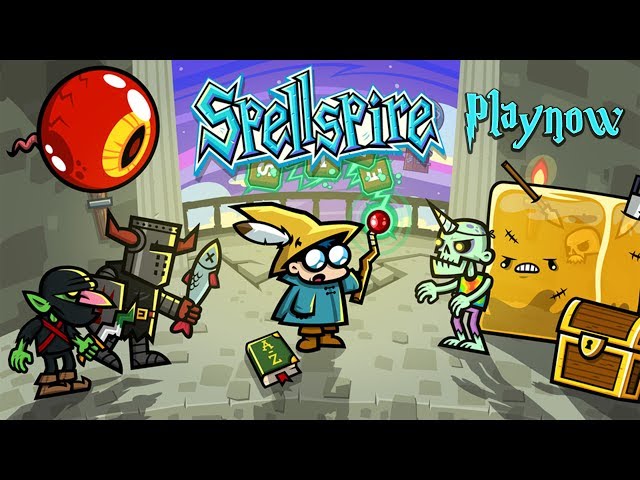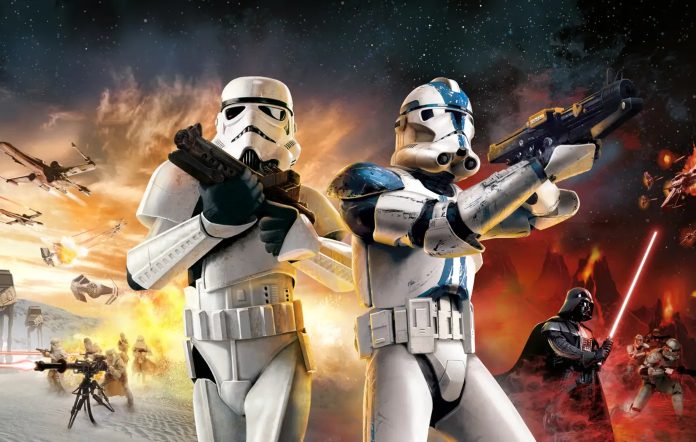In a gaming landscape saturated with futuristic combat, laser sights, and exo-suits, DICE and Electronic Arts took a monumental risk. They turned back the clock, not just by a few decades, but over a century, to the brutal, chaotic, and technologically nascent battlegrounds of World War I. The result was Battlefield 1, a title that was far more than a simple “first look” at a historical conflict. It was a visceral, atmospheric, and masterfully crafted experience that redefined what a historical first-person shooter could be. This game wasn’t about high-tech warfare; it was about mud, blood, desperation, and the dawn of modern combat. It plunged players into the raw intensity of the Great War, trading precision drones for lumbering tanks and tactical nukes for the terrifying shriek of an incoming artillery shell. This deep dive explores how Battlefield 1 achieved this, examining its groundbreaking game modes, immersive campaign, and the core mechanics that make it an enduring masterpiece in the genre.
Forging a New Path: The Audacious Return to World War I
The decision to set Battlefield 1 during WWI was a stroke of genius that set it apart from its contemporaries, which were locked in an arms race of ever-more-futuristic settings. This historical backdrop wasn’t merely a cosmetic change; it fundamentally shaped every aspect of the game, from weapon handling to vehicle combat and map design, creating a uniquely immersive and gritty atmosphere.
Atmosphere and Immersion Through Unmatched Presentation
From the moment you launch the game, Battlefield 1 assaults the senses. The Frostbite engine, pushed to its limits, renders sprawling landscapes of devastation and beauty. You’ll fight through the scorched sands of the Sinai Desert, the tight, rubble-strewn streets of Amiens, and the claustrophobic, gas-filled trenches of the Western Front. The dynamic weather system can transform a sunny battlefield into a rain-slicked quagmire or a fog-shrouded maze, forcing players to adapt their strategies on the fly. However, it’s the sound design that truly elevates the experience. The crack of a distant sniper rifle, the guttural roar of a flamethrower, the desperate screams of soldiers caught in a charge, and the thunderous impact of a Behemoth crashing to the earth combine to create an auditory tapestry of war that is both terrifying and exhilarating. The weapons feel weighty and mechanical, each reload a deliberate, clunky action, reminding you that these are primitive tools of destruction, not sleek instruments of a future war.
War Stories: A Humanized Single-Player Campaign
DICE abandoned the traditional single-protagonist campaign for an anthology format called War Stories. This was a brilliant narrative choice that allowed the game to explore multiple fronts and perspectives of the global conflict. Instead of following one super-soldier, players step into the boots of several different characters, each with their own unique tale of struggle and survival. In “Through Mud and Blood,” you’re a rookie tank driver learning the harsh realities of armored warfare. In “Friends in High Places,” you’re a rogue American pilot in the Royal Flying Corps. Other stories put you in the role of an Italian Arditi shock trooper, a Bedouin warrior fighting alongside Lawrence of Arabia, and an Anzac runner at Gallipoli. This approach not only provided gameplay variety but also served to humanize the conflict, focusing on personal stories of heroism and tragedy rather than a grand, impersonal narrative. The powerful opening prologue, which forces you to switch between different soldiers who are inevitably killed, sets a somber and respectful tone that resonates throughout the campaign.
The Mechanics of Chaos: Redefining Battlefield Gameplay

While the setting provided the soul of Battlefield 1, its refined gameplay mechanics gave it a solid, engaging core. It retained the classic rock-paper-scissors formula of the series while introducing new elements that perfectly complemented the WWI theme, encouraging teamwork and strategic thinking amidst the chaos.
The Four Pillars: Assault, Medic, Support, and Scout
The class system was streamlined into four distinct and vital roles, each crucial for a team’s success.
- Assault: The close-quarters specialists and anti-vehicle experts. Armed with powerful SMGs and shotguns, their primary role is to break through enemy lines and destroy tanks with dynamite, anti-tank grenades, and AT Rocket Guns.
- Medic: The backbone of any infantry push. Equipped with self-loading rifles effective at medium range, their most important gadgets are the medical crate and the syringe, which can revive fallen teammates and turn the tide of a firefight. A good Medic prioritizes reviving over killing.
- Support: The masters of sustained fire and resupply. Wielding light machine guns, they can lay down suppressing fire to pin enemies while their team advances. Their ammo crates and pouches are essential for keeping teammates armed and ready.
- Scout: The long-range specialists. Using powerful bolt-action rifles, Scouts excel at picking off enemies from a distance. However, their most valuable tool is the Flare Gun, which spots enemies on the minimap for the entire team, providing crucial intelligence.
This clear division of labor makes teamwork intuitive and rewarding. A squad that combines these roles effectively is far more formidable than a group of lone wolves.
Elite Classes and Behemoths: Turning the Tide
To add another layer of dynamic power to the battlefield, DICE introduced two game-changing mechanics. Elite Classes are powerful kits that can be picked up on the map, transforming a regular soldier into a formidable force. These include the heavily armored Sentry with a massive machine gun, the fiery Flame Trooper who can clear trenches with ease, and the Tank Hunter armed with a colossal anti-materiel rifle capable of crippling vehicles from afar. These classes create focal points of conflict as teams vie for control of their power.
Even more impactful are the Behemoths. When a team is significantly behind in a match of Conquest or Operations, a massive vehicle is deployed to help them make a comeback. Depending on the map, this could be the L30 Airship, a terrifying zeppelin raining fire from above; the Armored Train, a mobile fortress bristling with cannons; or the Dreadnought, a powerful warship that can bombard the entire coastline. These Behemoths are not invincible, but they force the winning team to shift their focus and coordinate to take them down, creating epic, cinematic moments and ensuring matches remain competitive until the very end.
Defining the Conflict: Game Modes and Iconic Battlegrounds
Battlefield 1’s true longevity lies in its multiplayer suite, which features both classic modes and a groundbreaking new addition that perfectly captures the scale and narrative of the Great War. These modes play out across a diverse set of meticulously designed maps that cater to different playstyles.

Operations: The Crown Jewel of Battlefield 1
The standout mode is undoubtedly Operations. This is not just a series of matches but a narrative-driven campaign fought across multiple maps. One team attacks sectors in sequence while the other defends. The attacking team has a limited number of “battalions” (respawn tickets) to capture the entire map. If they succeed, the battle pushes to the next map in the Operation, with a narrator explaining the historical context of the ongoing offensive. This mode brilliantly captures the feeling of a massive, protracted battle, with front lines shifting dynamically. Defending a final sector against a desperate last push from the attacking team, with a Behemoth looming overhead and artillery crashing down, is one of the most intense and memorable experiences in modern gaming. Operations like “Kaiserschlacht” or “Conquer Hell” are epic, multi-hour struggles that feel less like a simple match and more like a playable war documentary.
Classic Modes and Memorable Maps
Beyond Operations, the game features staples like Conquest, the classic 64-player, large-scale battle for control of key objectives across the map. The sheer scale and variety of combat—from dogfights in the sky to tank battles on the ground and infantry skirmishes in the trenches—remain as compelling as ever. The map design is a key strength, offering incredible variety. Sinai Desert is a vehicle-lover’s paradise with its wide-open spaces, while the urban labyrinth of Amiens forces brutal, close-quarters infantry combat. Argonne Forest is an infamous “meat grinder,” a dense, infantry-only map where chokepoints become scenes of utter carnage. Each map tells a story and requires different tactics to master, from the fortified heights of Monte Grappa to the coastal batteries of Fao Fortress.
Battlefield 1’s Enduring Legacy

Years after its release, Battlefield 1 remains a high-water mark for the franchise and the first-person shooter genre. Its success was not just commercial; it was a creative triumph that demonstrated the power of a well-realized historical setting and a commitment to atmospheric design.
A Bold Risk That Paid Off
In an industry often driven by trends, Battlefield 1’s journey back in time was a gamble that paid off handsomely. It revitalized the series, attracting both longtime fans and new players drawn to its unique setting. The game was praised by critics for its respectful tone, stunning presentation, and innovative Operations mode. It proved that players were hungry for experiences beyond the familiar modern and futuristic settings, paving the way for other developers to explore different historical periods.
Lessons in Immersion and Gameplay
The game’s legacy is rooted in its masterful execution of atmosphere. The blend of stunning visuals, world-class sound design, and chaotic yet strategic gameplay created a level of immersion that few games have managed to replicate. The success of Operations highlighted the potential for narrative-driven multiplayer modes that provide context and weight to the on-screen action. Even today, Battlefield 1 is a masterclass in how to build a compelling multiplayer experience that is both accessible for casual players and deep enough for dedicated veterans. For those wondering if it’s still worth playing, the answer is a resounding yes. While newer titles have emerged, the game maintains a dedicated community, and its unique gameplay and unparalleled atmosphere remain as potent as ever.
In conclusion, Battlefield 1 is far more than a “first look” at World War I; it is a definitive and deeply affecting interactive experience. DICE’s bold decision to explore the Great War resulted in one of the most immersive and memorable shooters ever made. Through its poignant War Stories, the strategic depth of its class-based combat, and the epic scale of its Operations mode, the game captured the horror, heroism, and chaotic nature of the conflict with profound respect and artistry. It stands as a testament to the power of a unique setting, phenomenal presentation, and innovative design, cementing its place not just as a great Battlefield game, but as a landmark achievement in video game history.













